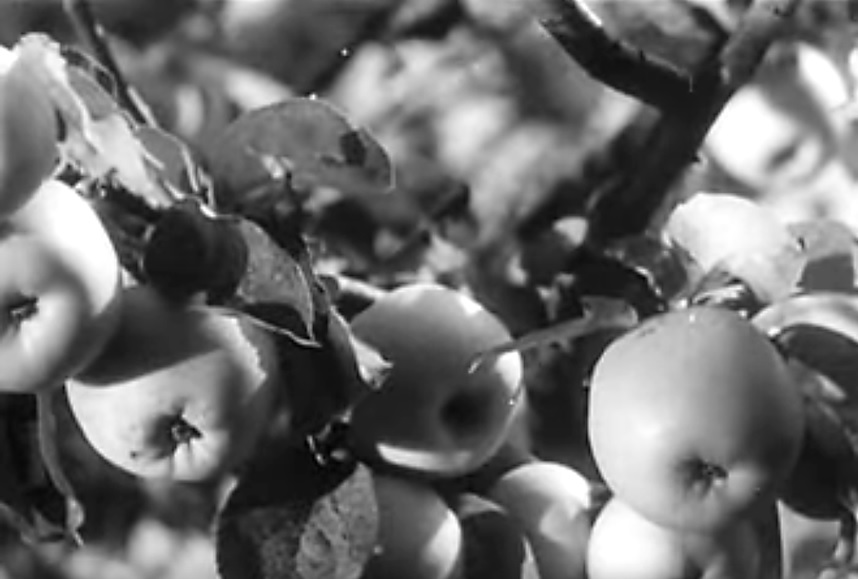![]()


![]()

■ The leader who succeeds Vasyli's position addresses the people and praises Vasyli's achievements as a Bolshevist. On this occasion, rather than all mourning Vasyli's death, it is emphasized that his death should be politically praised as a great act of the Bolsheviks to defeat their enemies.

■ Homa, watching the speech from a distance, exclaims that it is he who killed Vasyli ( 75~76 ). However, his voice does not reach the speech location ( 77~80 ). Needless to say, this sequence does not depict Homa's penance as a tragedy, but depicts in secret the depressing nature of the political power that Homa's personal sentiment, expressed in the form of penance, is deliberately excluded by the Bolsheviks.
■ In other words, for the Bolsheviks, they do not care who killed Vasyli. Whoever killed Vasyli is all a class enemy, and is nothing but an obstacle to the Bolshevik revolution. The personal internal affair and appeal of that enemy is not even the problematic issue. Only the fact that Vassili was killed by enemy is the politically exploitable interest.
■ So Homa's true grief in this sequence has already ceased to be about killing Vasyli, and has shifted to the fact that the grave personal act of confession of guilt is no longer taken seriously in the face of political power.

■ Vasyli's fame will be known around the world, like the Bolshevik planes in the sky above, said the enthusiastic leader, pointing to the sky ( 81~82 ). People look up at the sky, attracted by it ( 83 ). But there is nothing in the sky. This sequence, which ironically depicts the emptiness of the speech, is Dovzhenko's secret resistance to Bolshevism. At this point, Dovzhenko's anti-Bolshevism becomes apparent, and we will consider how this is suggested below.

![]()

■ The image of the fruit on the Ukrainian land that was captured at the beginning of the film reappears at the end. What is the meaning of this image ?
■ First of all, it contains Dovzhenko's anti-Bolshevist ideas. But make no mistake, he is not simply advocating individualism that resists the collective. Even though he was taking into account the censorship of the authorities, he was not secretly appealing to individualism in order not to conflict with it ( the censorship ).
■ Perhaps Dovzhenko is not denying the collective itself. Several images of fruit speak for that ( 85~90 ). The enumeration of shots of fruit, which may symbolize the Ukrainian people, and of the Ukrainian land, which bears that fruit, shows Dovzhenko's attachment to the collective.
■ Then we can consider that Dovzhenko is here depicting the collective that is not Bolshevism, not nationalism, that is, "the non-political collective" in an indigenous way. Indeed, it may be an escape from politics and reality, "the defeatism" that seeks salvation in the image of fruit ( as criticized by Demyan Bedny ).
■ However, it is also the reality that each fruit has its own flavor. The fact that each fruit has its own flavor is proof of the fruit's self-existence. It is the same for the people in collective. Even collective that aspire to the cause of revolution cannot erase the fruit of the inner reality that each person in the collective possesses.
■ In other words, Dovzhenko indicates that even in the collective, one should not give up one's self for the sake of revolution, but rather make one's self happy, which is the true state of the collective. Hence his use of the fruit imagery, ending the final scene with a couple in love ( 91 ). The title "Earth" may have been given in the sense that the existence of these people is the undeniable reality on the earth.
■ And it can be said that this "non-political collective" is evasion of communist political power, and also the realization of delusion that unconsciously desires the independent Ukrainian state, which could not be achieved under communist government.
■ This is the image that emerged from the ideological conflict between Ukrainian nationalism and communism, which Dovzhenko already had in his mind in "Zvenigora ( 1928 )". It is "Image of EARTH" created by Dovzhenko's internal conflict, in which he could not choose either ideology ( *A ).
( *A ) For more on "Zvenigora", refer to the following article.


